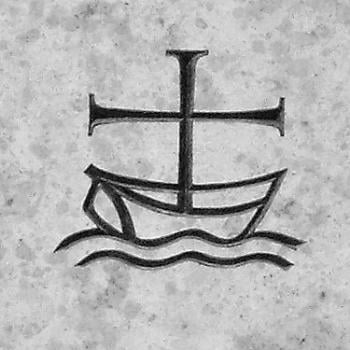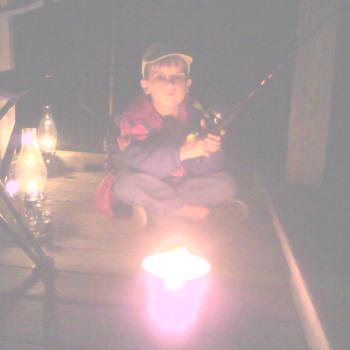These two sites were once linked by the Great Hopewell Road (c. 200-500 CE). They are both huge, vast, flat shapes enclosed by low earthen walls. The larger portion of the Octagon site (the upper right portion of figure 88) covers fifty acres (0.20 sq. km). To us non-farmers, that's equivalent to about thirty-eight American football fields laid side to side within the low walls of the Octagon's earthen shape. The idea of this vast space filled with people is mind-boggling, like images of rallies at the Lincoln Memorial. Octagon and High Banks align to moonrises at the northern and southern maximum extremes respectively, events that happen about two weeks apart (see figure 82) at radically different points on the horizon (see figure 84, top). Arial photos from the 1930s show traces of the badly eroded road running about fifty-five miles (34 km) between the two sites. Surveyors in the mid-1800s noticed the road, some 200 feet wide, but didn't grasp its extent. Was it used for ceremonial processions between the two sites?
Ohio alone once held an estimated ten thousand mound sites; about one thousand remain. In and beyond Ohio, America is as rich in mound-builder sites as Britain is in megaliths and stone circles, although the earthworks receive little attention.
Rösaring, Sweden (roughly 59º 30' N, 17º 30' E;
c. 1700 BCE-1200 CE)
Here, according to recent research, the southern maximum extreme Moon is visible from along the site's ceremonial corridor—its orb resting right atop the mound at the southern end.69 If Rösaring were 1º farther north, the southern maximum extreme Moon wouldn't crest the horizon at all.
The Sacred Number Eleven, the Eye of Horus, and the Moon's Cycle
I've heard for years that 11 is a sacred number, a perfect number, but the reasons why and the origins of this idea seemed elusive. One possible source relates to the lunar and solar years. The solar year is 365.25 days long. The twelve-cycle lunar year is 354.36 days long. The difference between them is eleven days.
Here's another lunar "eleven," which I'll demonstrate with the Full Moon mentioned previously for December 21, 2010. Add one year and subtract eleven days: December 10, 2011, and another Full Moon. To find last year's Full Moon in any month, start with the current Full Moon, then subtract one year and add eleven days.
Number tricks bring us back to Isis and Osiris, and the oudjat—the left Moon eye of Horus. It was completely healed, but it was not quite complete.
Consider Osiris' twenty-eight-year reign as a lunar cycle, symbolizing twenty-eight days.70 The body of Osiris—torn into fourteen pieces and then reassembled—is also lunar, since that's the number of days needed to go from Full Moon to Last Crescent ("torn apart") and New Crescent to Full Moon ("reassembled").
The Egyptians used the individual portions of the oudjat to symbolize fractions, as shown in figure 89. The curious thing about these six pieces is that you can add them together (1/2 + 1/4 + 1/8 + 1/16 + 1/32 + 1/64) and only get 63/64ths. There's 1/64 lacking. The mythic explanation is that the lone 1/64 is a symbolic honorarium each scholar or mathematician pays to Thoth for His blessing. That's a good story and a good spiritual practice, but here's another explanation that shows why Horus' left eye is so specifically lunar.
The Egyptian standard year was 360 days long (not counting the five extra days that were added so goddess Nut could birth her divine children). That standard 360-day year represents 64/64s.
Divide 360 days by 64 and you get 5.625 days. Then multiply 5.625 days by 63, to represent 63/64ths of 360. The total is 354.375 days, nearly the exact length of twelve lunar cycles (354.36 days). Horus' left eye, the Moon eye that was scattered and magically healed, mathematically represents the days of a lunar year.
Learn by Doing
1. Connect with the Moon: Create your own ways to greet and honor the Moon, as a means of building connection with the nighttime sky and of opening your rituals to spontaneity. Here are the bare-bones basics. Whether or not you use these ideas, you can't go wrong if you work from the heart:
Go outside.
Breathe deeply and center yourself.
Pour a libation and scatter bits of bread.
Speak to the Moon, thanking Her for your life and what's good in it.
Mean it.
Enjoy Her light.
Go inside.
2. Gather Moon water: At the next Full Moon, inside or outside, place a bowl of water where it will catch the Moon's light. Remove it the next morning before sunlight strikes it. This is Moon water! Use it for cleansing, drinking, bathing, soaking, or in a spray bottle to add some moist Moon energy to your life.
3. Go to extremes: Even when not at an extreme point in its cycle, the Moon swings widely from north to south each month. Find a good vantage point from which to observe this, then notice the range and consider finding a way to mark it.
4. Moon shadows: Just as you did with the Sun, you can use your body as a gnomon to cast Moon shadows and mark them on the land. If you were born during the night, time your shadow casting to your birth time. Unlike the Sun shadow for your birthdate and birthtime, your Moon shadow will differ each year over a nineteen-year cycle.




